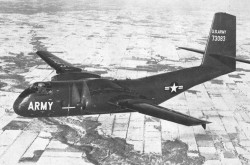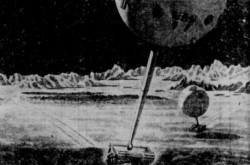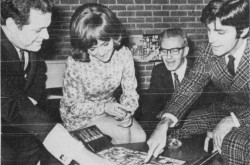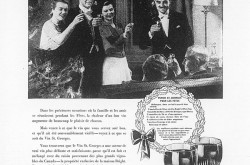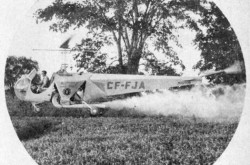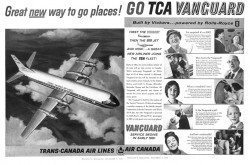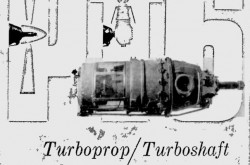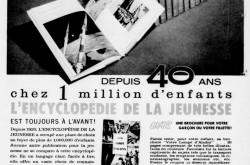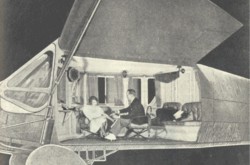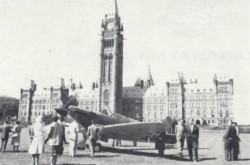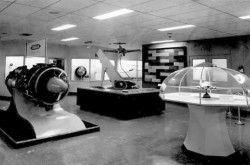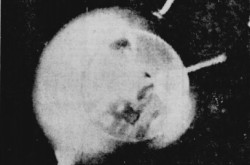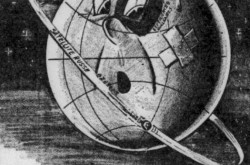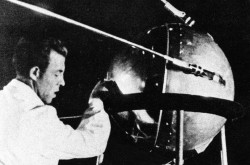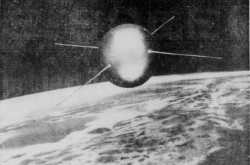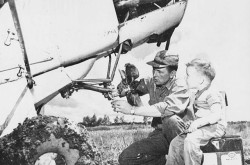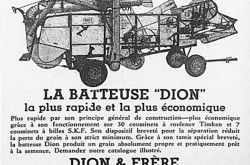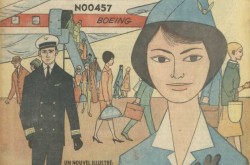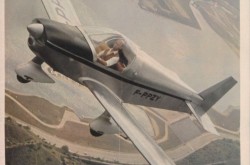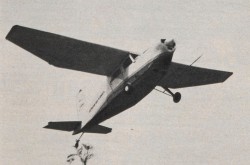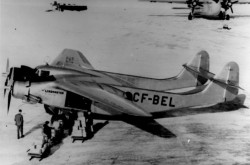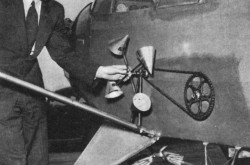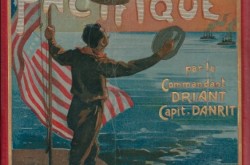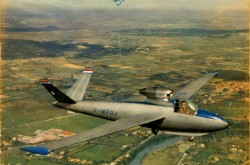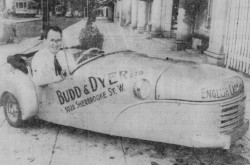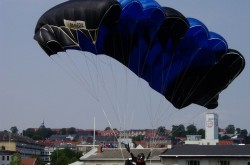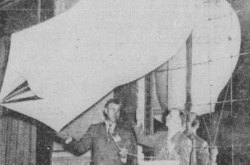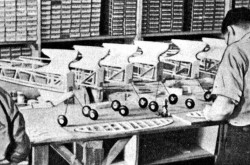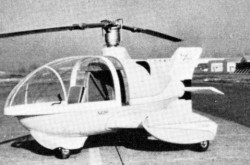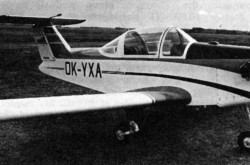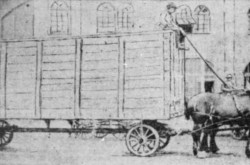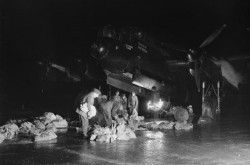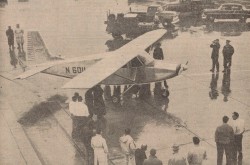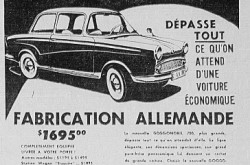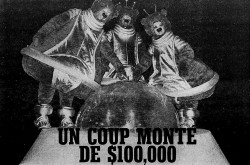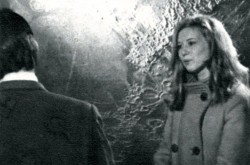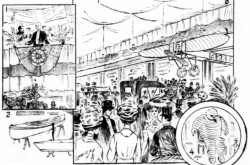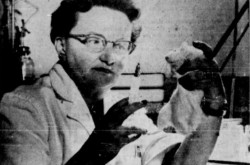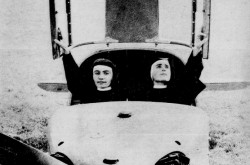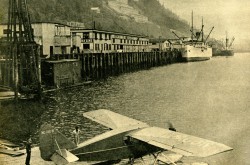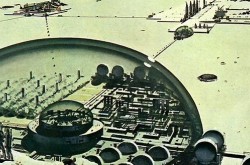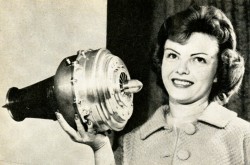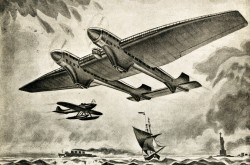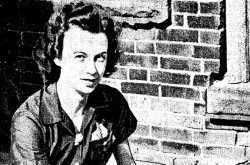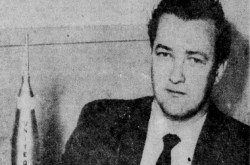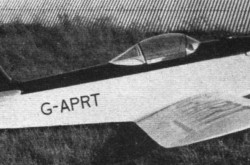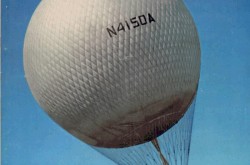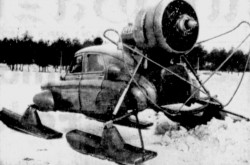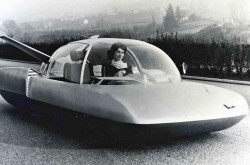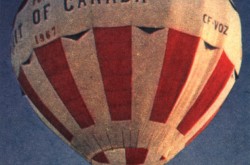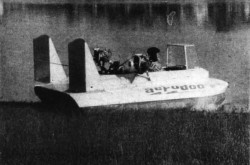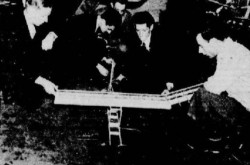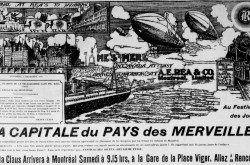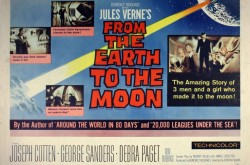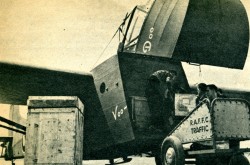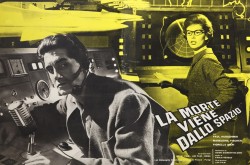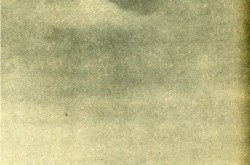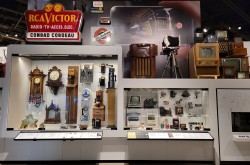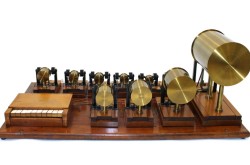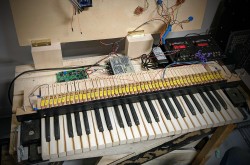One of the most fertile inventive minds at the dawn of the television age and one of the few African American pioneers of that technology, William Bundy Still, part 2
Welcome back, my reading friend, welcome indeed to the world of science, technology and innovation. Well, of technology and innovation actually. If I may quote, out of context, two lines from a 1977 (!) power ballad performed by the American singer / actor Meat Loaf, of his true name Michael Lee Aday, born Marvin Lee Aday, now don’t be sad, ‘cause two out of three ain’t bad. Sorry, sorry.
Err, welcome to this 2nd part of our fascinating article on an equally fascinating individual, one of the most fertile inventive minds at the dawn of the television age and one of the few African American pioneers of that technology, William Bundy Still.
When yours truly pulled the plug on the 1st part of this article, the year was 1941 and much of the world was at war, but not the United States. You see, a great many people in that country did not seem to care all that much that Europe was slowly descending into hell.
Sometime after the United States became embroiled in the Second World War, in early December 1941, Still placed a bid for some radio work with the American military. To his great pleasure, he got the work and opened up a factory in New York City, New York. At some point in 1942, Still had 75 or so people on his payroll.
Still secured several contracts for various products, among them a projectile speed measuring device, electronic laboratory equipment, etc.
Still also helped with the development of a ship to shore radio telephone, in other words a walkie talkie, for the United States Navy. He completed the project in 6 or so months. Given the size of Still’s factory, the United States Navy transferred the production contract of the radio telephone to a much larger entity, also located in New York City and well known for its intercom systems, Dictograph Products Corporation.
Mind you, Still’s employees also produced intercom components for Dictograph Products.
The catch with that information is that yours truly has yet to find any information linking Dictograph Products, or Still for that matter, with the only United States Navy radio telephone that I have come across, namely the MAB, a 1942 device produced by another American firm, Communications Company Incorporated.
In any event, soon after completing his contractual obligations, in 1942, I think, Still joined the staff of Dictograph Products. As head of that firm’s electronics research department, he was able to develop a system which allowed a specially designed telephone to be plugged into any wall socket for use in a building’s intercom network.
Still loved his new job. Even so, he continued to be fascinated by television. Still regretfully resigned from Dictograph Products after only 3 or so months.
In February 1943, either before or after leaving Dictograph Products, Still contacted the Federal Communications Commission (FCC), an independent agency of the American government, to obtain a television station license.
At some point in 1944, I think, Still incorporated Jamaica Radio Television Company, a small firm which might not have been in the same location as his Jamaica Radio & Television Service, and this even though it was also in Jamaica, a neighbourhood / village located within Queens, a borough of New York City.

One of the crowds attracted by the television demonstrations orchestrated by William Bundy Still at his radio and television store in New York City, New York, namely Jamaica Radio Television Company. Anon., “Television Today for Tomorrow’s Customers.” Radio & Television Retailing, 12 June to 8 July 1944, 31.
Jamaica Radio Television’s store soon to attract attention. You see, 3 evenings a week, Still turned on a television camera, possibly of his own design, which was placed in the display window. Said television camera was connected to television sets located in that same window. Before long, news had spread throughout the neighbourhood that it was possible for people to see themselves on television. As result, Jamaica Radio Television’s store soon became the place to visit if one was in the least interested in acquiring a television set.

William Bundy Still fiddling with a television camera of his own design in the studio adjacent to his store, Jamaica Radio Television Company, New York City, New York. The gentleman sitting on the right was William E. Moulic, technical editor of the American monthly magazine Radio & Television Retailing. Anon., “Television Today for Tomorrow’s Customers.” Radio & Television Retailing, 12 June to 8 July 1944, 31.
Aware like yours truly is that you very much want to have some idea of what Still looked like, I am taking the liberty of inserting a photograph of him at this point in our story.

William Bundy Still posing for a photographer in order to show the innards of one of his television cameras, New York City, New York. Laurence Schwab, Junior, “Television and the Amateur.” Radio Craft and Popular Electronics, June 1945, 554.
The FCC gave its blessing to Still’s February 1943 request in early August 1944, thus allowing him to operate an experimental television station, New York City’s 4th, W2XJT.
And yes, my astute reading friend, the letters XJT may very well have stood for Experimental Jamaica Television. Very good. Grab yourself a gold star and… One, not two. Sigh…
Albert W. “Al” Bernsohn, an individual well versed in broadcasting, stated in the Fall 1944 issue of the then quarterly American magazine Televiser that Still was, and I quote, “one of the most fertile inventive minds in television.”
Besides his television camera, Still developed a simplified television set which allegedly cost 20 to 33% less than the television sets produced by more or less established manufacturers. He also invented an electronic film scanner which “televised” motion pictures at a rate of 24 frames per second, which was the rate at which motion picture cameras operated, rather than at the rate of 30 frames per second, the rate at which typical television cameras operated.
Still’s experimental television station, yes, W2XJT, began to operate in early July 1945, more than 2 or so years after Still had launched the project and 3 months after the date mentioned in the FCC paperwork. Mind you, at least one contemporary source claimed that Still’s station began to operate in mid-October. I have a feeling that this source was mistaken.
Setting up W2XJT had cost US $ 21 000 or so, a sum which corresponded to more than $ 530 000 in 2025 currency. Labour costs were not included in that sum, however.
Interestingly, 90 % or so of the equipment contained in the station (master control board, cameras, sound equipment, intercommunication system, transmitter, etc.) was devised by Still himself. Indeed, much of the equipment contained in the station was built by Still, using components salvaged from equipment in his shop.
Even though he did much of the work all by himself, Still received some periodic assistance from some engineering friends and some help from some high school students, but I digress.
Now, if you thought that the aforementioned US $ 21 000 was a huge pile of dough, my penny-pinching reading friend, please note that television equipment makers seemed quite surprised by that sum. You see, their impressions of what a similar if more powerful installation would cost varied between US $ 115 000 and US $ 160 000 or so, sums which corresponded to $ 2 900 000 to $ 4 000 000 or so in 2025 currency. Wah!
Even though he might have designed at least some parts of the antenna of his television station, Still neither designed nor built the 65 or so metre (213 or so feet) tall tower which supported it. Said antenna seemingly allowed W2XJT to broadcast its signals within a radius of 55 or so kilometres (35 or so miles).
Incidentally, someone, quite possibly someone from Brooklyn-Manhattan Transit Corporation, an urban transit holding company based in New York City, having pointed out that this tower might one day fall on one of the firm’s elevated lines, Still had to take out a US $ 100 000 insurance policy. And yes, my mathematically aware reading friend, that sum corresponded to close to $ 2 500 000 in 2025 currency.
And you have a question, do you not, my reading friend? Where in the name of all that is unholy did Still find the US $ 21 000 he needed to create his experimental television station? I wish I knew.
In any event, if Still’s venture proved successful, it could have paved the way to the creation of other small television stations in towns and cities throughout the United States. The parties behind such television station projects might have flocked to Still, a prospect which did not fill the managements of firms like Zenith Radio Company, Westinghouse Electric and Manufacturing Company, Radio Corporation of America, Philco Radio & Television Company or General Electric Company with joy and happiness.
Speaking (typing?) of success, to quote a journalist writing in April 1945 for the American weekly magazine The Billboard, “Henry Ford did it in a garage. Maybe Still can do it in the back of a radio store in Jamaica, [New York.]”
Do I need to remind you who Henry Ford was? Wunderbar.
Little is known about what Still broadcasted on Channel 13, the number assigned to W2XJT by the FCC.
In late October 1945, however, a 14- or 15-year-old American actor / singer well known locally, took part in a television show sponsored by Jamaica Radio Television. Bernard “Bernie” Feld portrayed a teenager going through manual training.
In early November, one of the first television program training programs launched in New York City was scheduled to get under way. Twenty-five individuals were to receive theoretical and practical training under the supervision of Lenore Berse, W2XJT’s program manager and a former assistant in the television department at the flagship store of a famous American department store chain, R. H. Macy & Company Incorporated.
The specially selected students were to meet 24 times over a period of 13 weeks. All classes were to be held in the evening. Oh, and the tuition fee would be a cool US $ 100, a sum which corresponded to $ 2 500 or so in 2025 currency.
A well-known American designer / director (theatre and film) / producer, Ralph Alswang, was to act as director. Assisting him would be the production manager of W2XJT, Miriam Tulin.
To answer the question which is slowly coalescing in your little noggin, Tulin was a talented actress / theatre director / mentor / professor who was involved in the early development of television. Mind you, Tulin was also the director of a small television production agency based in New York City, Video Production Associates (Incorporated?), and…
You have another question, do you not, my astute reading friend? Why did yours truly use verbs like were to? A good question. You see, I am not entirely sure that this program actually took place.
This being said (typed?), said program seemed to bear some resemblance to another training program. Let me explain.
In June or July 1946, Still and a New York City–based non-profit organisation dedicated to supporting excellence and education in theatre, namely American Theatre Wing War Service Incorporated, signed some sort of agreement.
According to that agreement, W2XJT would broadcast a show written and directed by members of a 10-week television course, a course aimed at Second World War veterans. A rotating system would be used to ensure that each student would become familiar with all aspects (writing, producing, directing, designing, etc.) of the operations of a television studio.
Those veterans, incidentally, were actors and other performers who might have become a tad rusty while serving in the American armed forces during the Second World War.
The individual in charge of that series of television classes was Harvey Marlowe, a producer previously employed by one of the most important radio broadcasting firms in the United States, American Broadcasting Company.
The project might or might not have fallen through, however. You see, again, in early October 1946, 20 veterans working under the auspices of American Theatre Wing War Service seemingly presented the first of a series of 4 television programs on WABD, a New York City television station owned by an American television equipment manufacturer / broadcasting firm, Allen B. DuMont Laboratories Incorporated, hence the name of the station, and this through its subsidiary, DuMont Television Network Incorporated.
In any event, let us now go back in time just a wee bit in order to reconnect with Still and W2XJT’s confirmed activities.
By early 1946, Still and his small staff of volunteers at W2XJT hoped to produce an hour of live broadcasts and 3 hours of film broadcasts each week. They also hoped to broadcast 8 to 10 hours of music per day on the station’s audio channel.
Incidentally, the aforementioned Tulin supervised the training of the station’s volunteer staff in collaboration with the aforementioned Berse.

An advertisement for the weeklong intra-store television demonstration held at the flagship department store of B. Gertz Incorporated, New York City, New York. Anon., “B. Gertz Incorporated.” Sunday News, 27 January 1946, Q1.
In January 1946, Jamaica Radio Television hastily installed some television equipment of its own making in the Jamaica flagship store of B. Gertz Incorporated, a division of a larger chain of American department stores, Allied Stores Corporation. That equipment was used over a weeklong period for an intra-store demonstration, between 31 January and 6 February, I think.
And here is the flagship store in question…

The flagship store of B. Gertz Incorporated, in New York City, New York, as it looked on the day of its official opening, in early October 1928. Anon., “B. Gertz Incorporated.” Brooklyn Daily Eagle, 4 October 1928, L.I. 3.
Discussions in that regard had begun in the early fall of 1945. For some reason or other, they lapsed for some weeks, until December in fact, when an agreement was signed.
Why such an agreement, you ask? A good question.
You see, B. Gertz’s management was very much aware that the flagship store of a famous American department store corporation, Gimbels Brothers Incorporated, in Philadelphia, Pennsylvania, had created a lavish intra-store television demonstration in cooperation with the RCA-Victor division of Radio Corporation of America.
Said demonstration, the first of its kind in the world, I think, included a temporary television station and no less than 20 television sets scattered in 20 minitheatres on 7 floors of the building. Ten-minute presentations took place every half hour, and this over a period of 22 days in October and November 1945. Visitors could see kitchen utilities and electrical appliances. There were also fashion presentations which included beautiful, famous, luxurious and striking items like fur coats, hats, scarves and shoes.
And yes, now that the Second World War was over, few items were still subject to rationing. So, let go of your purse strings, my reading friend, it was time for a shopping spree! Sorry, sorry.
The science geek in me feels obligated to point out that an electron microscope developed by the RCA-Victor division of Radio Corporation of America was on display in the foyer of the auditorium located in the Gimbels Brothers store, but I digress.
B. Gertz’s management was very much aware that Gimbels Brothers’ demonstration had attracted a lot of attention – and hundreds of thousands of visitors, or so it was claimed, and all this despite the weaknesses in its programming.
Mind you, B. Gertz’s management also knew that it did not have the financial resources required to hold a television demonstration of such magnitude. B. Gertz’s Vice President, Max Gertz, therefore asked Still to keep things simple.

Three of the people involved in the intra-store demonstration held in late January and early February 1946 at the flagship department store of B. Gertz Incorporated, New York City, New York. From left to right, Max Gertz, Vice President of B. Gertz; Miriam Tulin, Director of the television production agency Video Production Associates (Incorporated?); and Harold B. Merahan, sales promotion manager of B. Gertz. Anon., “Long Island Store Video Test Ends Well, Despite Bad Start.” Broadcasting Telecasting, 11 February 1946, 69.
Gertz, yes, Max Gertz, held some pretty clear ideas of how the demonstration should be held. Indeed, he advocated the use of a blend of product demonstrations and dramatic vignettes. Gertz’s emphasis on programming was based on the aforementioned weaknesses in the programming of the demonstration held at the Gimbels Brothers store.
The director of the television production agency he contacted, the aforementioned Video Production Associates, abided by his wishes. The equally aforementioned Tulin worked with her small team to develop an ambitious schedule consisting of 10 presentations each day, shown on the half hour. As programming changed every second day, Tulin and her team devised no less than 32 different presentations, and this in cooperation with several departments of the store.

A rehearsal held before the intra-store television demonstration held at the flagship department store of B. Gertz Incorporated, New York, New York. Anon., “Advertising and Merchandising – Retail Know-How Results from Gertz’s Tele Showing.” Televiser, March-April 1946, 31.
There would be models presenting the newest hair styles and the newest accessories, clothes and shoes. There would be demonstrations of the newest washing machines, steam irons and pressure cookers. There would be music and dramatic vignettes.
Fran Lee, born Frances Lederman, an American actress / consumer advocate / model better known as Mrs. Fix-It / Fixit, would pay a visit to the glass enclosed temporary studio located in the toy department on the 4th floor of B. Gertz’s store at some point during the week, and this to show new uses for outworn household items.
The American stars of a popular American radio show, Breakfast with the Fitzgeralds, Pegeen Fitzgerald, born Margaret Worrall, the “First Lady of radio chatter,” and her spouse, Edward “Ed” Fitzgerald, would also drop in.
Other well-known artists personalities expected to pay a visit to the store were the American dance teacher / dancer / choreographer Raymond “Ray” Harrison, the American dancer / choreographer / actress Bambi Linn, born Bambina Aennchen Linnemeier, and Pearl Primus, a Trinidadian American dancer / choreographer whose dream of becoming a medical researcher had been thwarted by her skin colour.

One of the American Red Cross Incorporated programs broadcasted during the intra-store demonstration held in late January and early February 1946 at the flagship department store of B. Gertz Incorporated, New York City, New York. The chairperson of the Central Queens Chapter of the American Junior Red Cross and spouse of the news editor of a New York City newspaper, Daily News, Patricia Casselman, born Wolf, was seen here talking about the clothes made for Europe’s children war victims. Thelma Birenbaum, a member of the American Junior Red Cross in full uniform, was standing besides her. Anon. “Red Cross Television Program.” Daily News, 7 February 1946, K8.
Before I forget, the presentations offered to B. Gertz’s customers also included public service programs prepared under the supervision of the local parent–teacher association, a quiz for parents for example, as well as programs offered by American Red Cross Incorporated and Boy Scouts of America Incorporated.
Unfortunately, the hastily installed television transmission equipment did not work as planned. Indeed, no image might have been seen on the first days in the television sets placed in a storefront window, in the basement and on 4 floors of the B. Gertz store.
Incidentally, those television sets might have been provided by Radio Corporation of America and General Electric Company.
What could be seen on the final days of the demonstration was not clear, as contemporary sources contradicted each other. Mind you, it was possible that the equipment worked when journalist A was on site but was on the fritz when journalist B dropped in. By the looks of it, on the day the official demonstration offered to the media took place, the equipment produced only blurred images.
Television industry observers and promoters wondered how the people who had flocked to B. Gertz’s store would react to those technical glitches. They feared that many of them would conclude that it was still too early to buy a television set.
Those same observers and promoters also wondered how the firms which manufactured the consumer items presented during the intra-store demonstration would react. Indeed, many representatives of those firms left B. Getz’s store with the firm intention of warning their superiors not to take part in other similar demonstrations.
Even so, the number of improvised presentations set up in the temporary studio was sufficient to satisfy the curiosity of many customers. There were demonstrations of household items like pressure cookers and steam irons, for example, while actors showed how to properly use a scarf or tie a tie.
As those improvised presentations took place, the cameramen were under orders from the management of B. Gertz to act as if the television equipment was actually working. The aforementioned Tulin protested, arguing that this playacting constituted a waste of time for W2XJT’s trained technical people and well as an insult to the multitude of customers and the 125 or so journalists based in the heart of New York City who had made the long journey to the store at one time or another. She was ignored by B. Gertz’s management, which stated that the store had made a commitment to put up a show.
A personal digression if I may. The aforementioned tie tying brings to mind a telephone call yours truly made to his parents a looong time ago. You see, I needed to attend some sort of event which required that I wear a jacket and tie. Having never tied a tie before, I needed assistance. Explaining how to tie a tie over the telephone eventually proved impossible. Even so, it produced a great deal of hilarity at both ends of the line.
When I visited my parents and younger brother sometime later, in Sherbrooke, Québec, I asked my late mom if she could tie several ties that I brought back to my humble abode, in Ottawa, Ontario.
And yes, someone tied my tie so that I would fit in at the aforementioned event, which might, I repeat might, have been the official opening, in June 1988, of the new main building of what was then the National Aviation Museum, in the village of Rockcliffe, Ontario, today’s Canada Aviation and Space Museum, in Ottawa, but back to our story.
Gertz, yes, Max Gertz, claimed that customer curiosity had been such that attendance at the flagship department store in Jamaica had increased by 25 % or so during the week the intra-store demonstration had been held.
During an interview with someone from the American bimestrial magazine Televiser, Gertz put on a brave face on what taken place by stating that “intra-store television is a powerful selling medium.” He went on to state that “We like what we’ve seen and we’d like to try it again – next time allowing sufficient time for proper installation and tests so that the equipment is in perfect working order.”
Oh, before I forget, the intra-store demonstration had cost US $ 15 000 or so, split into 3 relatively equal shares (presentations, equipment and advertising), a sum which corresponded to $ 355 000 or so in 2025 currency. Wah!
A slightly delicate question if I may. Did you see Still, or any African American for that matter, on any of the photographs linked to the intra-store television demonstration we looked into? No? Still might not have wanted to be involved in that rather unsuccessful effort, you think? Perhaps. The fact that he was an African American might also have played a small role in his absence in the photographs linked to our intra-store television demonstration. Just sayin’.
How about the two of us call it quits for today, my reading friend? You undoubtedly have important things to do on your to do list that need to be taken care of. Yours truly will still be here next week, if the Flying Spaghetti Monster wills it.
Toodeloo.






































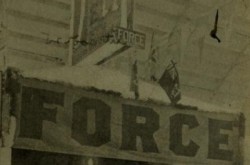
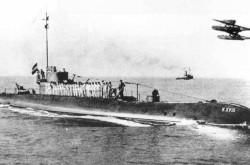
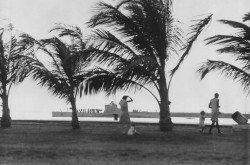
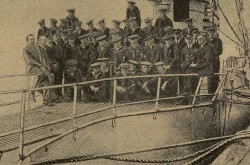
![A block of photographs showing some of the people involved in the bombing of beluga whales in the estuary and gulf of the St. Lawrence River. Anon., “La chasse aux marsouins [sic]. » Le Devoir, 15 August 1929, 6.](/sites/default/files/styles/thumbnail_7/public/2024-09/Le%20Devoir%2015%20aout%201929%20page%206.jpg?h=584f1d27&itok=TppdLItg)

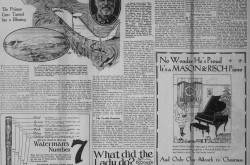

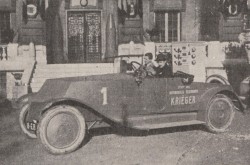
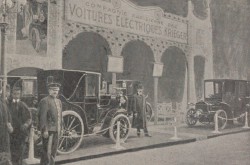

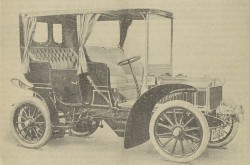


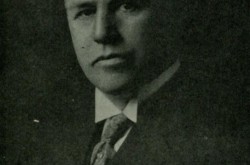
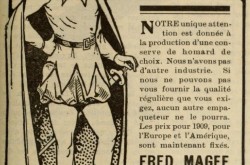
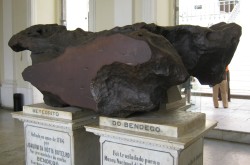
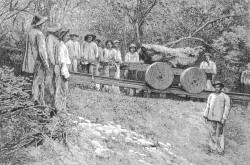
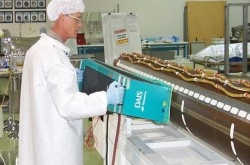
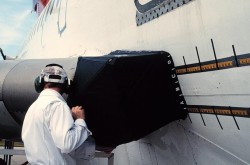
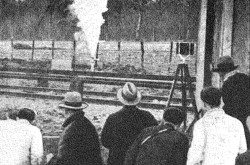
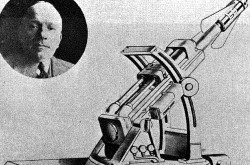
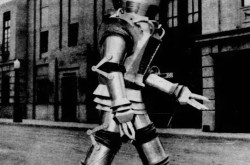
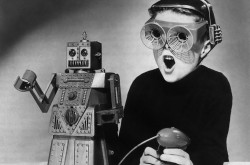
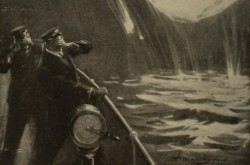
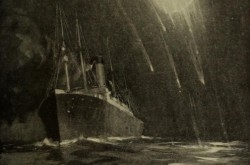
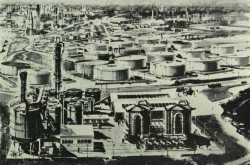
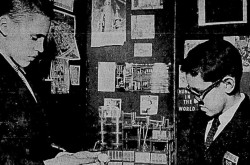
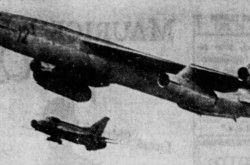
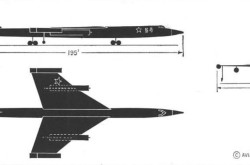
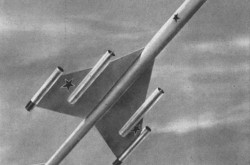

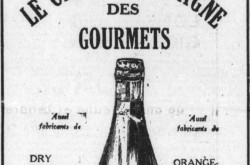
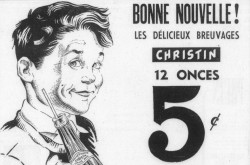

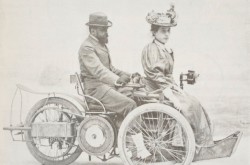
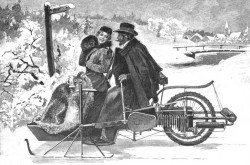

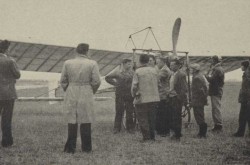
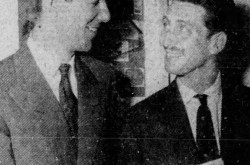
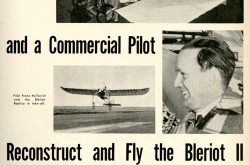
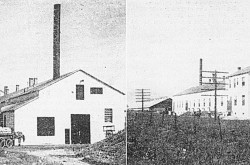

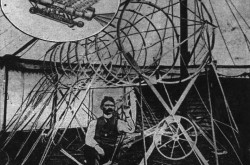

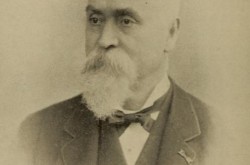
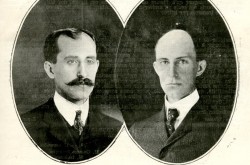
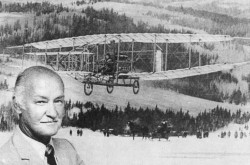
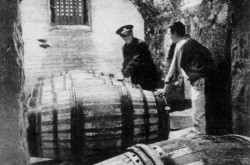
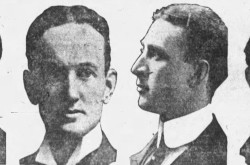
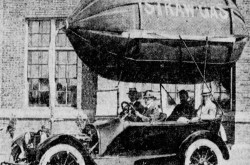

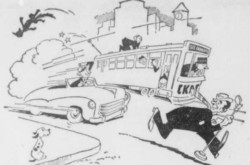
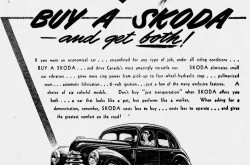
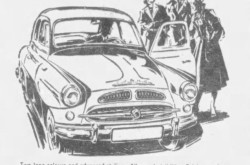
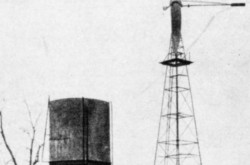
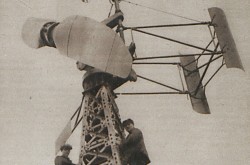
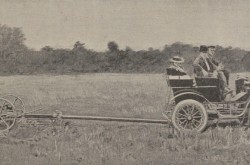

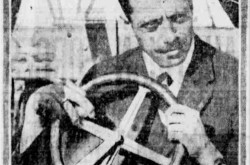

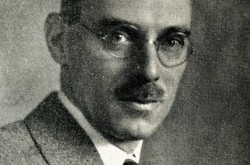
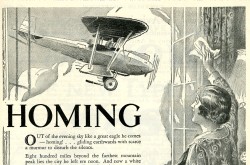

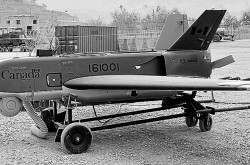


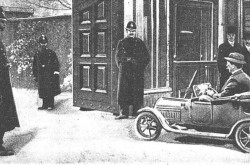
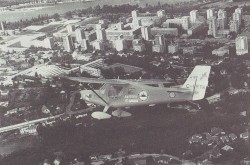
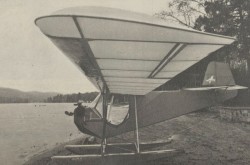
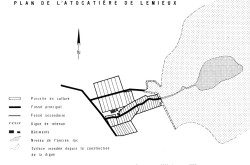

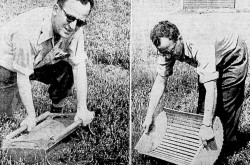
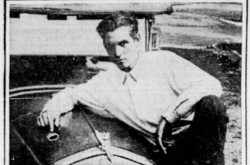
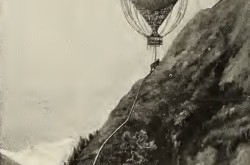


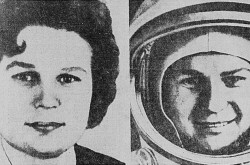
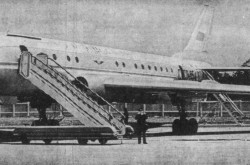
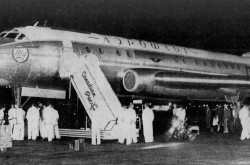
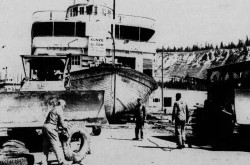
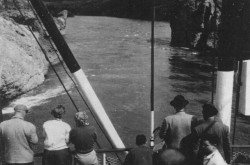
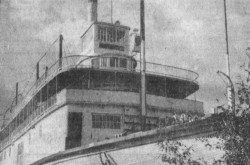
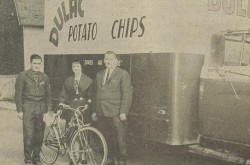
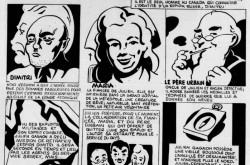
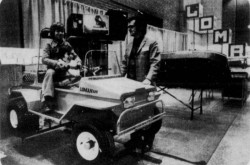

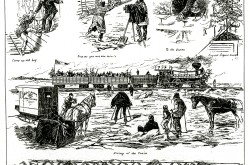
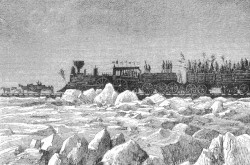
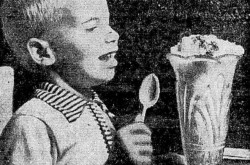
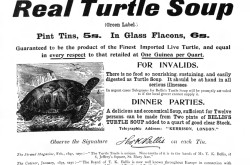


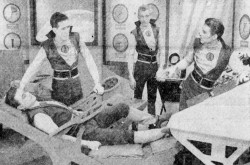

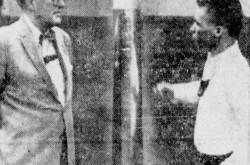


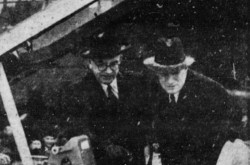
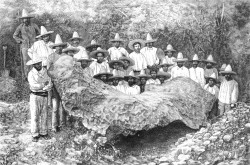
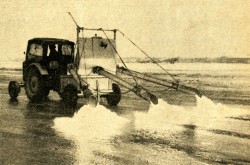

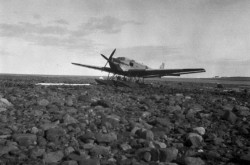

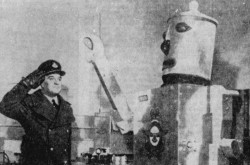
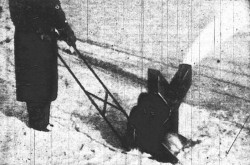


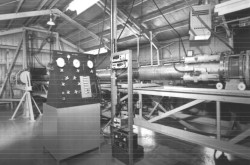

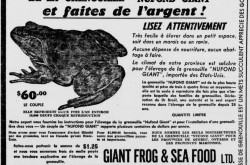
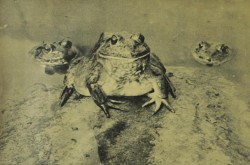

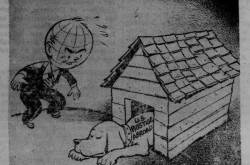
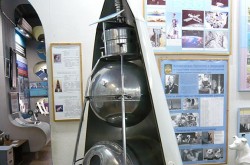



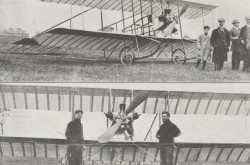


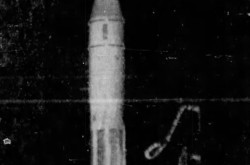
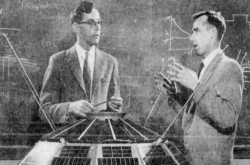
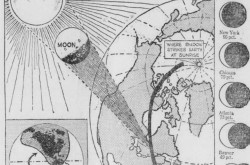

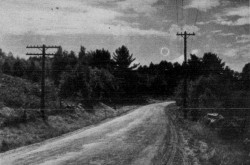





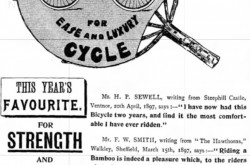
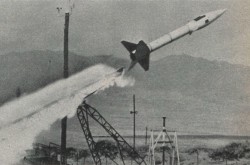
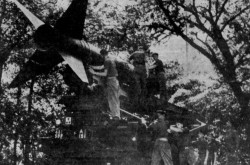
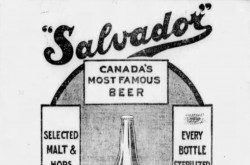
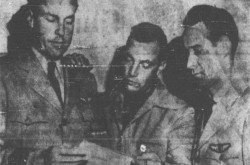
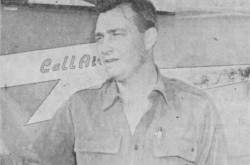
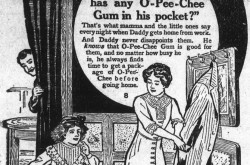

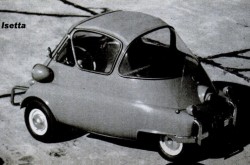
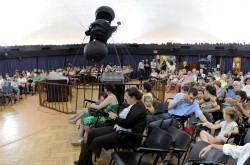
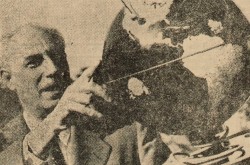
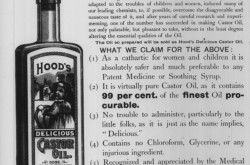
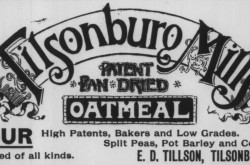



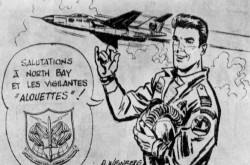
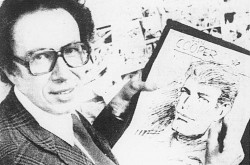
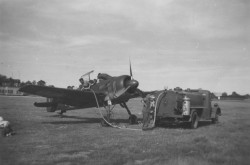

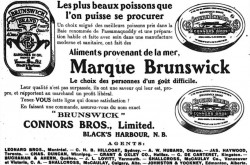
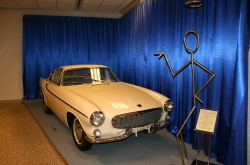

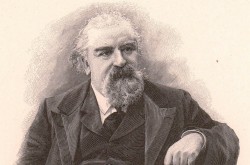


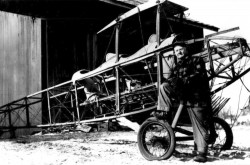

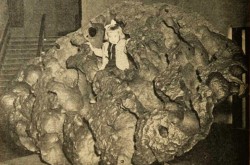
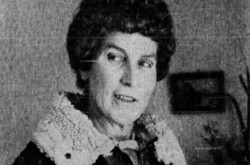

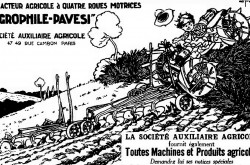
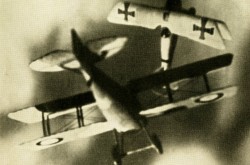

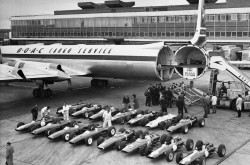
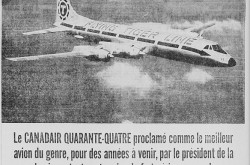


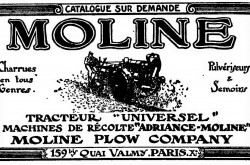
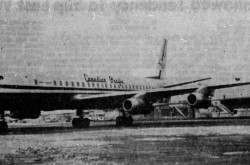
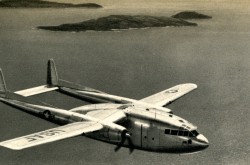
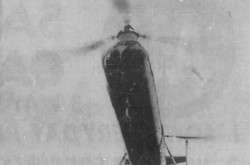

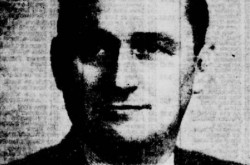
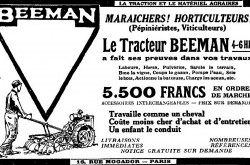
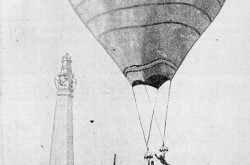

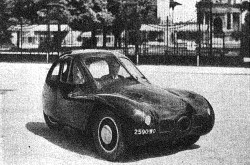
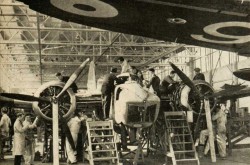


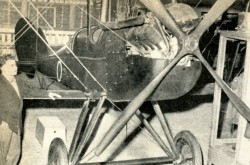
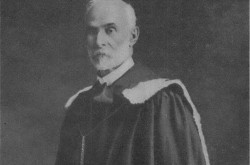
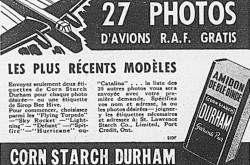
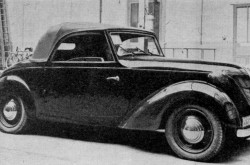

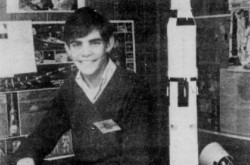

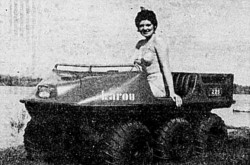
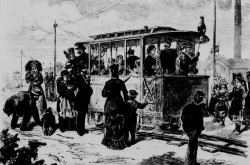
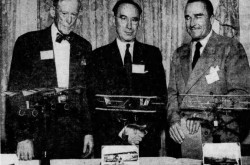
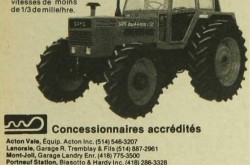



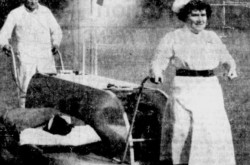

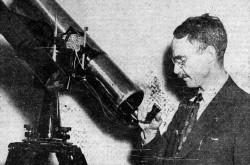

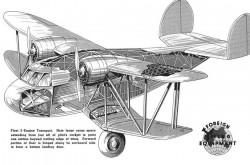
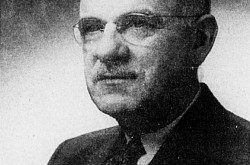
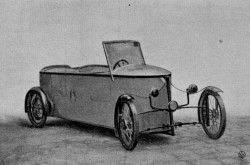

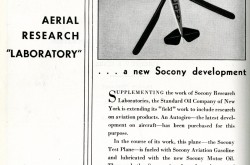

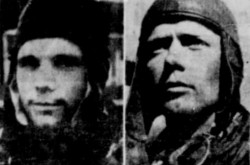
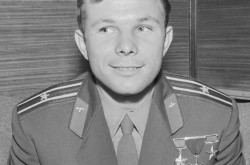

![Peter Müller at the controls [sic] of the Pedroplan, Berlin, Germany, March 1931. Anon., “Cologne contre Marseille – Le mystère du ‘Pédroplan.’ [sic]” Les Ailes, 2 April 1931, 14.](/sites/default/files/styles/thumbnail_7/public/2021-04/Les%20Ailes%202%20avril%201931%20version%20big.jpg?h=eafd0ed4&itok=WnBZ5gMf)
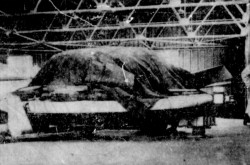
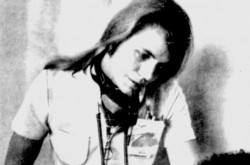
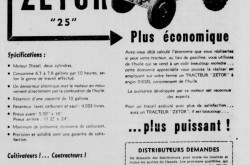
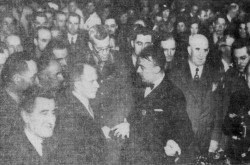
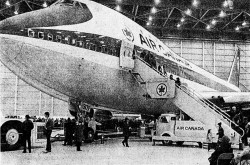
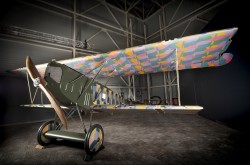

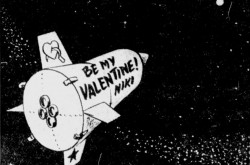
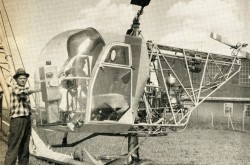

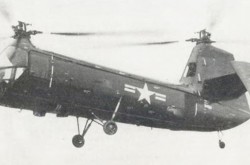
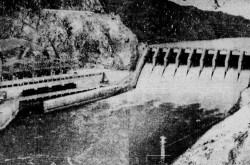
![One of the first de Havilland Canada Chipmunk imported to the United Kingdom. Anon., “De Havilland [Canada] DHC-1 ‘Chipmunk.’” Aviation Magazine, 1 January 1951, cover.](/sites/default/files/styles/thumbnail_7/public/2021-01/Aviation%20magazine%201er%20janvier%201951%20version%202.jpg?h=2f876e0f&itok=DM4JHe5C)
